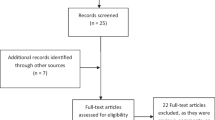Abstract
Purpose
Postoperative chyle leak (CL) is a rare but severe complication after neck dissection. Conservative first-line treatments, such as total parenteral nutrition (TPN), octreotide and pressure dressing, can significantly prolong the hospital stay. Efficient and well-tolerated conservative treatment options are still lacking.
Methods
We have developed a new maneuver to treat CL called “finger-pressing.” A thumb is pressed against the point of leakage between the two muscle heads of the sternocleidomastoid. Finger-pressing continues for about 24 h until CL stops. We used this maneuver to treat six CL patients. Drainage output and duration of hospital stay were compared with another six CL patients treated using the traditional pressure dressing.
Results
The finger-pressing maneuver cured all six CL patients. Most CLs (5/6) could be controlled after about 24 h pressing. Only one high-output CL required 72 h of finger-pressing to stop the leak. All patients had their drainage tubes removed within 3 days after pressing started and all patients tolerated the treatment well. In the control group, the traditional pressure dressing time varied from 2 to 5 days, until the patient was no longer able to cooperate. Three patients underwent a second operation that cured the CL in two cases. The average hospital stay was significantly longer than that in the finger-pressing group (20 vs 9 days, p = 0.037).
Conclusions
Finger-pressing is an efficient and well-tolerated method for treating CL post neck dissection. This maneuver could be a useful adjuvant therapy to traditional methods in treating CL.


Similar content being viewed by others
Abbreviations
- CL:
-
chyle leak
- TPN:
-
total parenteral nutrition
References
V. Merki, J. Pichler, R. Giger, G. Mantokoudis, Chylothorax in thyroid surgery: a very rare case and systematic review of the literature. J. Otolaryngol. Head Neck Surg. 45(1), 52 (2016)
J.A. Glenn, T.W. Yen, G.G. Fareau, A.A. Carr, D.B. Evans, T.S. Wang, Institutional experience with lateral neck dissections for thyroid cancer. Surgery 158(4), 972–978 (2015)
R.L. Crumley, J.D. Smith, Postoperative chylous fistula prevention and management. Laryngoscope 86(6), 804–813 (1976)
R.T. Gregor, Management of chyle fistulization in association with neck dissection. Otolaryngol. Head Neck Surg. 122(3), 434–439 (2000)
J.Y. Chan, E.W. Wong, S.K. Ng, C.A. van Hasselt, A.C. Vlantis, Conservative management of postoperative chylous fistula with octreotide and peripheral total parenteral nutrition. Ear Nose Throat J. 96(7), 264–267 (2017)
I. Park, N. Her, J.H. Choe, J.S. Kim, J.H. Kim, Management of chyle leakage after thyroidectomy, cervical lymph node dissection, in patients with thyroid cancer. Head Neck 40(1), 7–15 (2018)
S.W. Delaney, H. Shi, A. Shokrani, U.K. Sinha, Management of chyle leak after head and neck surgery: review of current treatment strategies. Int. J. Otolaryngol. 2017, 8362874 (2017)
A. Ilczyszyn, H. Ridha, A.J. Durrani, Management of chyle leak post neck dissection: a case report and literature review. J. Plast. Reconstr. Aesthet. Surg. 64(9), e223–e230 (2011)
C.C. Campisi, F. Boccardo, C. Piazza, C. Campisi, Evolution of chylous fistula management after neck dissection. Curr. Opin. Otolaryngol. Head Neck Surg. 21(2), 150–156 (2013)
B. Nussenbaum, J.H. Liu, R.J. Sinard, Systematic management of chyle fistula: the southwestern experience and review of the literature. Otolaryngol. Head Neck Surg. 122(1), 31–38 (2000)
J.I. Ulibarri, Y. Sanz, C. Fuentes, A. Mancha, M. Aramendia, S. Sanchez, Reduction of lymphorrhagia from ruptured thoracic duct by somatostatin. Lancet 336(8709), 258 (1990)
A. Coskun, M. Yildirim, Somatostatin in medical management of chyle fistula after neck dissection for papillary thyroid carcinoma. Am. J. Otolaryngol. 31(5), 395–396 (2010)
F.E. Lucente, T. Diktaban, W. Lawson, H.F. Biller, Chyle fistula management. Otolaryngol. Head Neck Surg. 89(4), 575–578 (1981)
Acknowledgements
This study was supported by Grants 2016C33141 and 2017 C33052 from the Science and Technology Department of Zhejiang Province.
Author information
Authors and Affiliations
Corresponding author
Ethics declarations
Conflict of interest
The authors declare that they have no conflict of interest.
Ethical approval
All procedures performed in studies involving human participants were in accordance with the ethical standards of the institutional and/or national research committee and with the 1964 Helsinki declaration and its later amendments or comparable ethical standards.
Additional information
Publisher’s note Springer Nature remains neutral with regard to jurisdictional claims in published maps and institutional affiliations.
Rights and permissions
About this article
Cite this article
Xiang, D., Liu, Z., Yang, T. et al. Finger-pressing: a simple and efficient way to stop chyle leak post neck dissection. Endocrine 67, 374–378 (2020). https://doi.org/10.1007/s12020-019-02119-0
Received:
Accepted:
Published:
Issue Date:
DOI: https://doi.org/10.1007/s12020-019-02119-0




